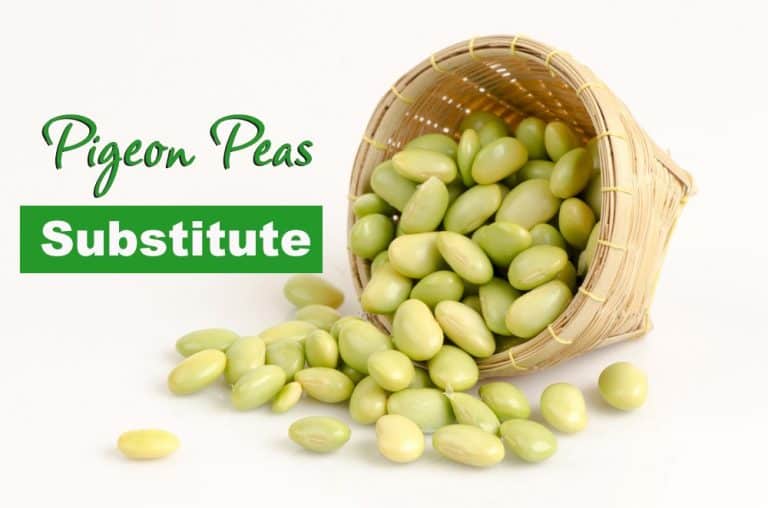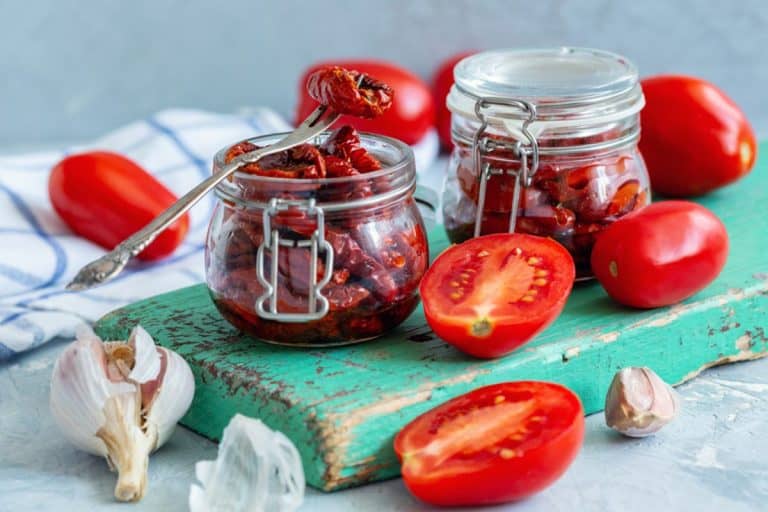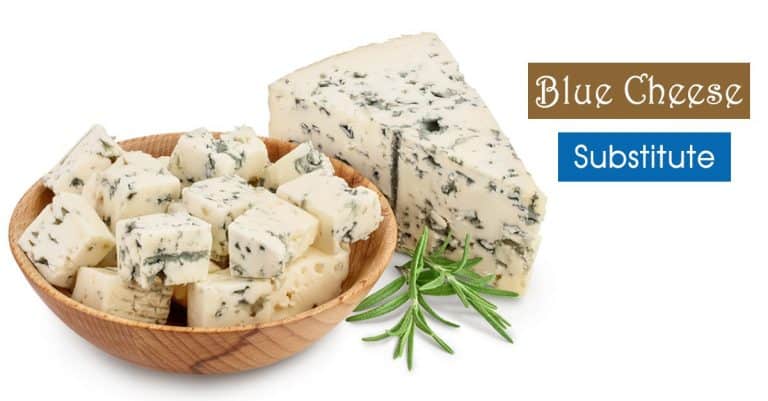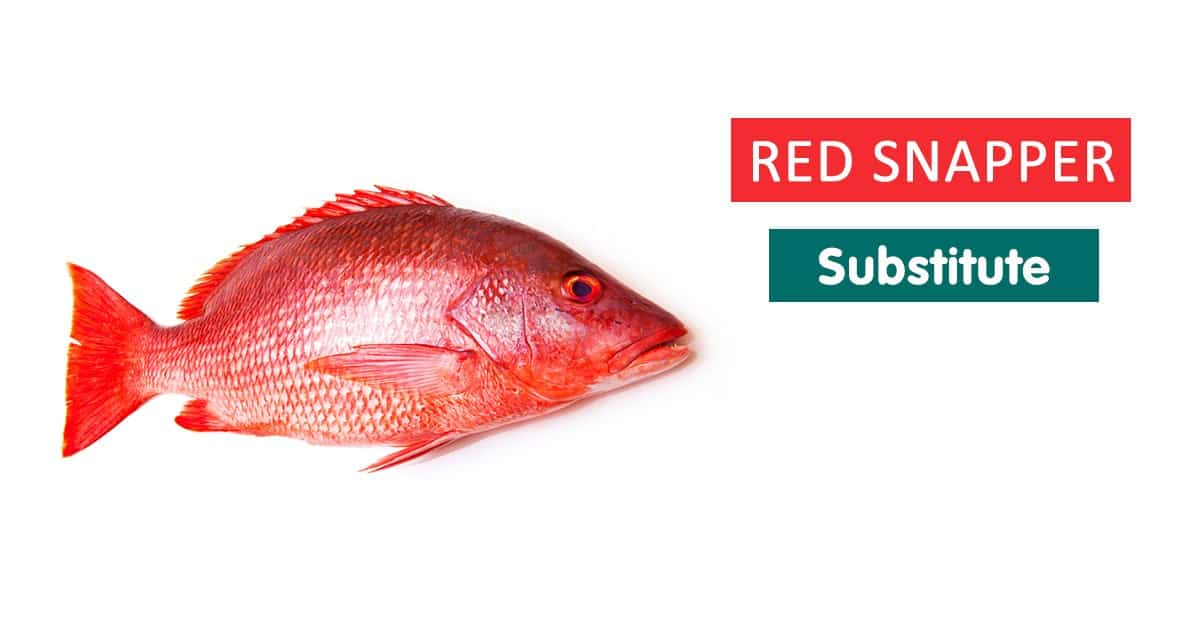
Red Snapper serves you an abundant taste profile of a mild, sweet, and nutty flavor, perfectly delivered through a lean, moist, but firm texture. It’s understandable that it becomes a star in many meals or parties.
But its popularity can be a blessing or a curse, as you will run out of this fish quite often. Worry not. We’ve got your back with the top 9 ingredients you can utilize as a Red Snapper substitute. Keep scrolling down!
Top 9 Red Snapper Substitutes
When it comes to Red Snapper substitutes, we find the following 9 fishes closest to the original taste that can fulfill any recipe.
#1. Queen Snapper
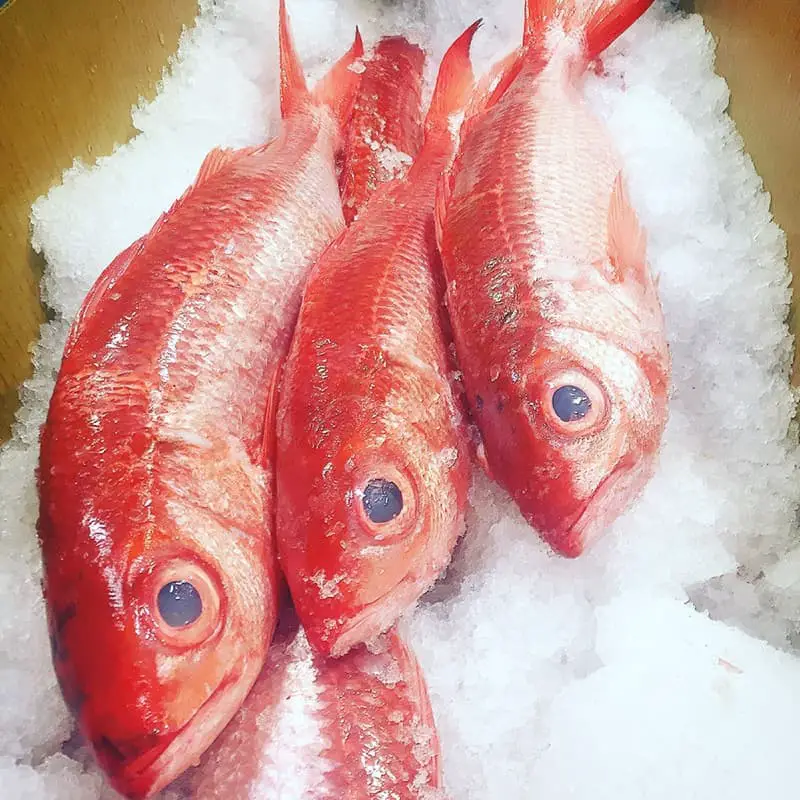
If you ask what the best Red Snapper substitute is, the answer must be the Queen Snapper, regarding its origin, look, and taste. Interestingly enough, people usually mistake the two for each other.
Queen Snapper also belongs to the Lutjanidae family like Red Snapper and are considerably large, about 36 inches long. Both fish share the same red color with an orange undertone, but the Queen type leans to the brighter shade.
Like its sibling, Queen Snappers offers a sweet and delicate flavor with a moist texture. You can use them interchangeably in many recipes: grilled, roasted, baked, to name a few.
We find this fish blossom in the Coconut Snapper and lime-cilantro butter dish. The grilled meat is encrusted with sweet coconut and panko, topped with some lime slices to add a sour touch, making the fillet flooded in the buttery sauce even sweeter and juicier.
Queen Snapper is a potassium superstar, activating essential enzymes in our body to balance blood pressure and reduce the risk of strokes. Like any other fish, this kind of Snapper is high in healthy fat – Omega 3, protecting you from heart disease and high cholesterol.
#2. Mutton Snapper

Mutton Snapper is a little brother of Red Snapper, coming from the Lutjanidae family with a smaller 20-inch body’s length on average. You can easily find it in the warm water of Florida, the Caribbean Sea, or the Bahamas.
This type of fish has an olive-green hue on the upper side and fading towards the belly, but you’ll notice a red-orange tinge on its fins and tail. You can rest assured when replacing Red Snappers with Mutton Snappers since they share a sweet, mild taste and a lean, moist, and delicate texture.
You can try many dishes with this twist, but let the Crispy Mutton Snapper with cilantro garlic sauce be a star in your meal. You will spoil your palate with a crunchy coat with a moist and sweet kick inside, lingering with the herby scent in the nose.
Mutton Snappers not only whet your appetite but also do wonders for your health. With the low cholesterol, low fat, and high protein content, this lean fish can be a healthy meal for dieters. It also delivers a significant number of vitamins, including A, B6, B12, and D.
#3. Lane Snapper
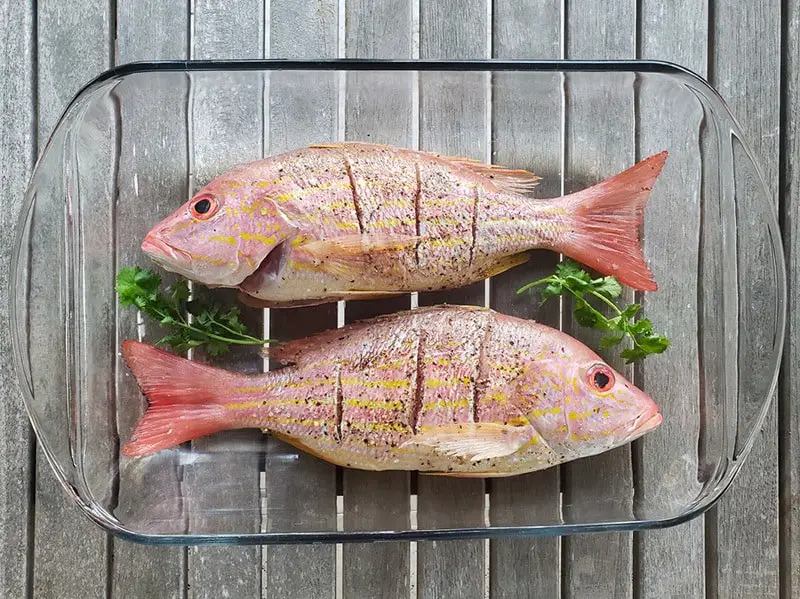
Another member from the Lutjanidae family is Lane Snapper, falling on the smaller side. These fish reach an average length of 20 inches and weight of 2-4 pounds.
You can easily spot Lane Snapper, thanks to its exceptional appearance with many distinctive yellowish stripes emerging in the silvery skin and a hint of pinkish-red in the tail and back.
Because these fish eat small shrimp and crabs, they boast a firm, lean flesh with an extra sweet flavor, making it a major substitute for Red Snapper in baking, grilling, frying, or pan-searing dishes.
Fed up with these greasy dishes? If so, you wouldn’t want to miss the Watercress salad with sautéed Lane Snapper. Get ready for a subtly sweet, fishy punch glorified with fresh, crunchy, and peppery veggie.
If you happen to make this recipe in cold winter months when watercress is not easily available, most substitutes for watercress can do the trick.
It is not an overstatement to say that Lane Snapper is a savior for your digestive system. Its nutrients promote food absorption and inflammation and never upset your stomach.
#4. Vermilion Snapper
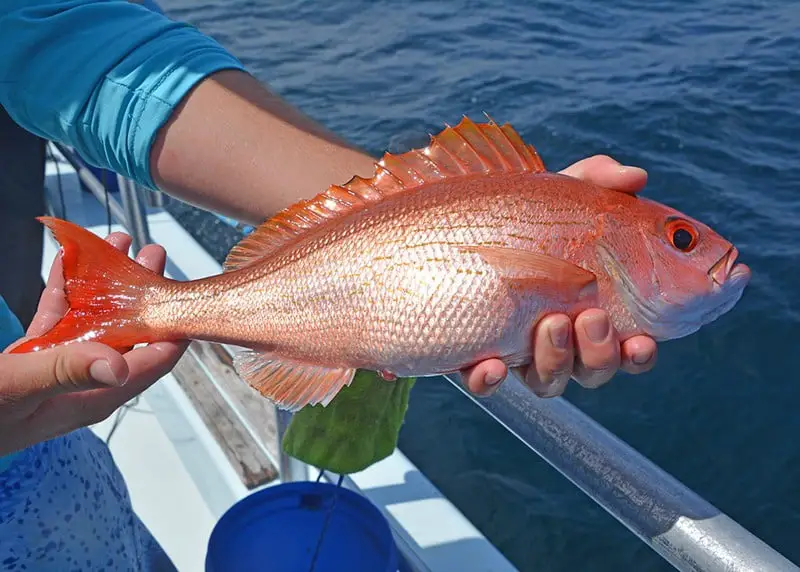
Vermilion Snappers, also called Beeliner or Mingo, are found in the warm waters of Cape Hatteras and southeastern Brazil. It is the last candidate from the umbrella of Lutjanidae on our list.
While Queen Snapper is said to be the twin of Red Snapper, Vermilion Snapper is the miniature version of the two. Similarly, it comes with a bright red color but has a pale and silvery belly and a smaller size of about 14 inches.
Though these fish have more physical features in common with Red Snapper than the Lane type, we still rank them at a lower position for a reason.
Their taste is somewhat milder and less sweet, but you can confidently use this ingredient when calling for Red Snapper. They are favorable for steaming, baking, and sautéing.
If you are in a hurry, why not try Roasted whole vermilion snapper? This one-plate dish is a perfect balance of flavor. Every fork-full of fish delivers a meaty and sweet tone with a bright kick of parsley and garlic without costing you too much time.
Vermilion Snapper meets up to 70% of recommended daily intake of selenium. This antioxidant is a great supporter of white blood cell formation and the stable function of your Thyroid gland.
#5. Grouper

It’s time to say goodbye to the Snapper family. We introduce you to a new Red Snapper substitute – Grouper. It is a Serranidae member and mostly from the waters of Europe and North America.
You’ll be surprised how giant this fish is. It can reach up to 7.5 feet and 440 pounds. Grouper is not a colorful resident under the sea, coating a chocolate brown spotted with many black speckles on the back.
This lean fish whets your appetite with a mild yet distinct flavor and a sweet undertone. With a soft and flaky texture, you’ll want to use it in grilled, pan-seared, or hotpot recipes instead of Red Snapper.
Let’s bring the coziness to every single taste bud with a spicy Grouper hotpot. The meat is nicely soft and sweetened by the seasonings, flooded in the hot spicy broth. What can you expect more on a chilly day?
Groupers bring you plenty of health perks. Thanks to its low saturated fat yet high Omega-3 index, you can witness a great improvement in heart health. What’s more, a 100-gram serving of Grouper satisfies 5% of the recommended daily intake of vitamin B1.
#6. Sea Bass
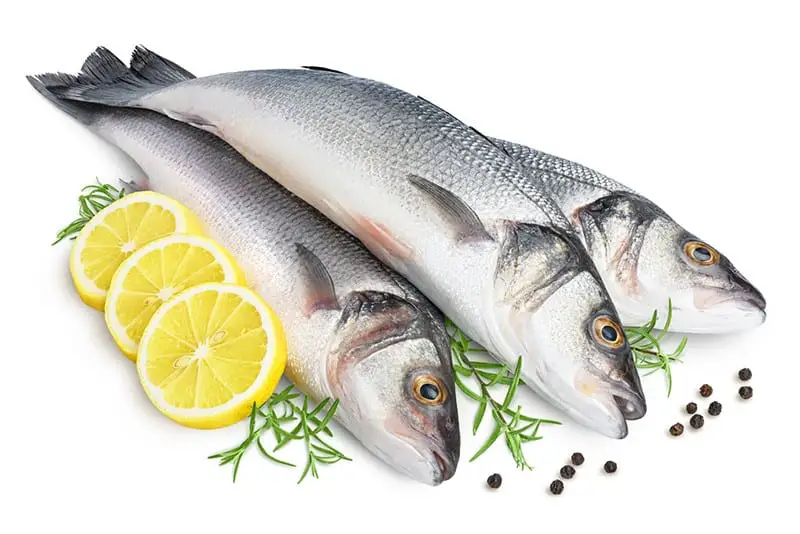
Sea Bass is not a sole individual but a common name for many fishes under the umbrella of order Perciformes. These fish are native to the California and Mexico seas.
Due to their diverse profile, they vary in size, ranging from a few inches to a maximum of 6 feet and 500 pounds. That said, their looks are somewhat similar, with a gray-black hue fading to bronze and white at the belly.
Sea Bass delivers a mild taste with a subtly sweet trace. Those who are not into the strong fishy flavor can’t go wrong with this pick to substitute Red Snapper in some recipes like frying, grilling, or pan-searing.
If you are a healthy eater with a delicate taste, steamed Sea Bass with cockle pistou is what you’re looking for. This dish does a great job for a light dinner without too much oil, fat, and strong smells.
This fish contains Omega-3 and Omega-6 fatty acids to balance cholesterol levels and reduce the likelihood of obesity and heart disease. It’s also an abundant source of magnesium, selenium, magnesium, zinc, calcium, and other minerals essential for body growth.
#7. Tilapia
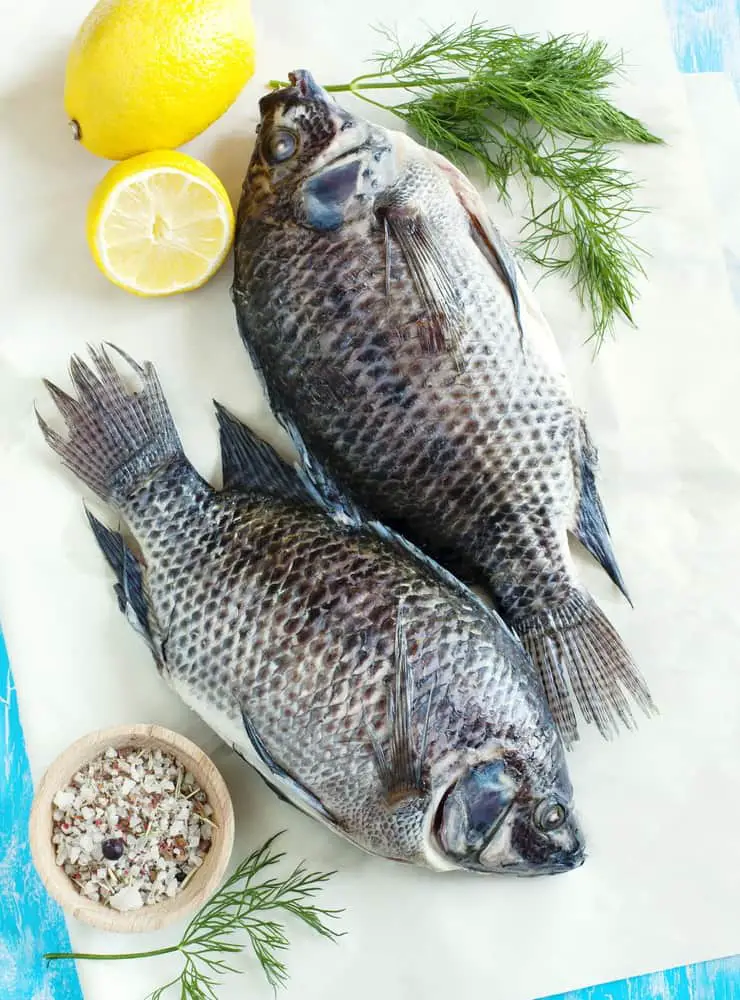
Here we come to a potential candidate from freshwater – Tilapia. It’s also the most affordable choice on our list for its rising farming trend. Africa and the Middle East are the home of Tilapia, but today, you can find it almost anywhere.
Mature Tilapias reach up to 24 inches and 11 pounds. Although you sometimes come across it in a red look, the black ones still take up the majority. This fish is almost flavorless, but you can trace a hint of sweetness.
Its mild flavor makes it easier to pair with other ingredients. You can utilize its lean flesh in baking on grilling. We love to serve a whole fish rather than fillets to fully enjoy its farm-to-fork freshness.
A grilled Tilapia is the easiest yet tastiest dish you can cook within 15 minutes. The secret is to incise some horizontal marks for the seasonings to soak up. This freshwater fish’s light flavor is the perfect base for seasonings to shine.
Tilapia is rich in vitamin B12, which aids in the red blood cell and DNA formation plus maintains your nervous system. It is also low in saturated fat for a healthy meal. And selenium in this fish boosts the immune system, cognition, and fertility.
#8. Catfish

Like Tilapia, Catfishes also live in freshwater. Their name originates from the long feelers or barbels resembling cat whiskers. They are quite easy-going, living in any water condition from fresh to muddy and thriving in small streams, lakes, rivers.
Catfishes come with many variants in appearance. Some have a black or grey-blue hue, while some lean to the olive-green shade. This difference results from the different living conditions. And they are all covered with slimy skin-like eels.
Regarding their taste, you can never forget the unique kick of a sweet and distinctively muddy flavor. The firm and moist flesh enable them to blossom in any fish recipe without ending up with a flaky texture.
You must have heard about McDonald’s Chicken nuggets, right? Today, we will blow your mind with the exact recipe for Catfish fillets. We’ve happened to come up with this idea and don’t have a name for it. But believe it or not, you’ll regret not trying it once.
Apart from being low in sodium and calories, this fish is packed with healthy fats, protein, healthy fats, minerals, and vitamins. B vitamins support cell health and prevent infections, while vitamin E is a good friend for your skin.
#9. Codfish
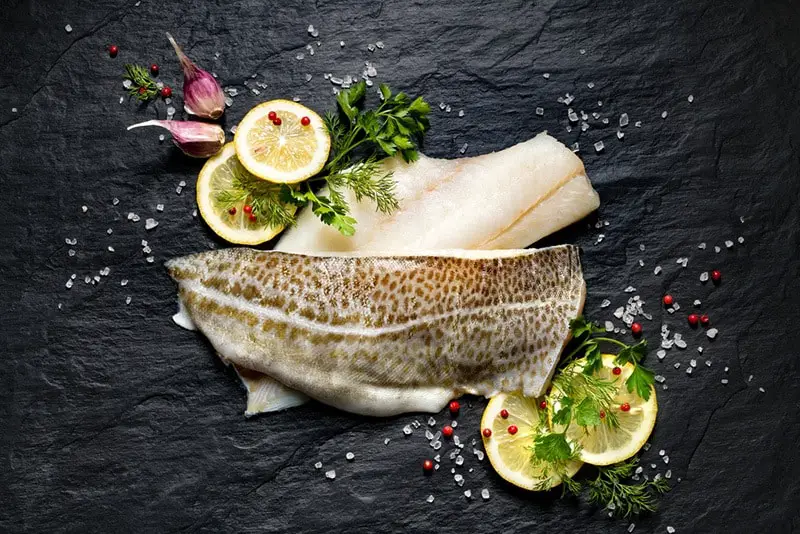
The last one on our suggestion list is Codfish from the Gadidae family. They live in large schools in the deeper and colder water. Now, you can buy them at a much affordable price, though Codfish was among the most pricey fishes several years ago.
You can easily notice these fish’s chin barbel and three dorsal fins, different from others on this list. Their skin comes in a dark hue with many shades, like black, gray, or even olive-green, depending on the depth.
You can’t expect more from a Codfish but a mild and delicate flavor with flaky flesh that can’t live up to a Red Snapper. But they do have a slightly sweet touch, allowing you to replace Red Snapper in a pinch. We recommend substituting in deep-fried, seared, or grilled dishes.
We also love replacing this mild fish in curries since the mild meat absorbs the seasonings pretty well and enhances its flavor. Add some of your favorite veggies like tomatoes, potatoes, or beans, and don’t forget to put in some coconut milk to delight your meal.
Antioxidants in this fish like vitamin E and selenium lead to a decrease in the risk of neurodegenerative disease, including Alzheimer’s. Codfish also deliver a huge amount of iodine, an essential mineral to stabilize thyroid function.
Frequently Asked Questions
Fish is not as easy to prepare as meat or vegetables. That’s why we have gathered some basic tips in preparing and filleting Red Snapper for you. Along with that, you’ll also get to know more about this fish and its health perks.
What Are Red Snappers And Their Health Benefits?
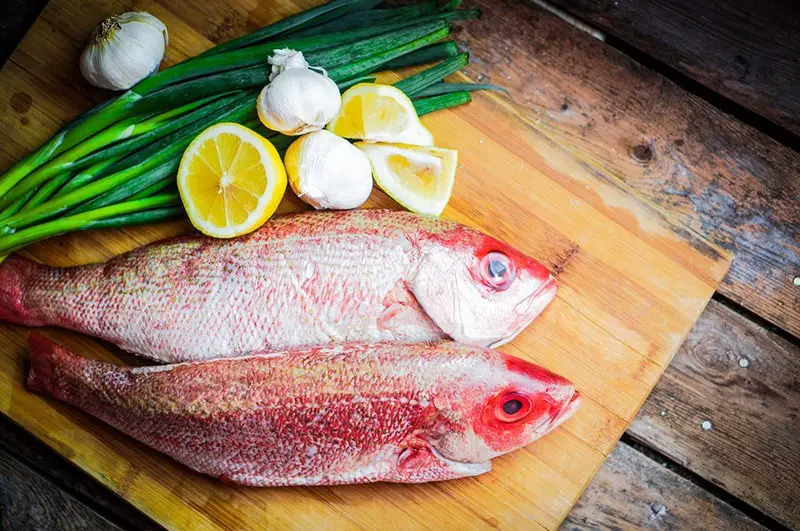
We all came across Red Snappers in many dishes, but do you know what kind of fish they are? In fact, they, also known as Scarlet Snapper, are a member of the Lutjanidae family, native to the eastern coasts of North America, the Caribbean Sea, and the western regions of the Atlantic Ocean.
As its name suggests, a Red Snapper comes with a deeply rosy-red hue and gets darker towards the tail and dorsal fins. They fall on the bigger side of fish, about 50 pounds and 40 inches long when mature.
These big guys also provide you with a rich nutritional profile. With their high potassium content but low in calories, Red Snappers supports a strong metabolism, ideal for weight management.
You can also benefit from the large amount of vitamin B12, aiding in blood cell and DNA formation.
How To Prepare Snappers (Red, Queen, Mutton, Lane, etc.)?
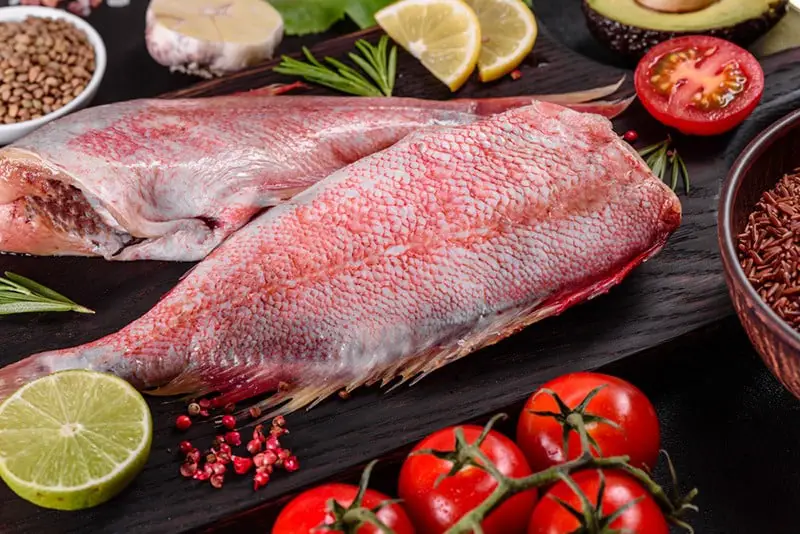
Choose A Good Snapper
It is advisable to buy at a trustable fishmonger since some may call other white fish “Snapper” despite having a poorer taste.
Choose a fresh fish that stays firm and bounces back easily when you press the meat. And you will also want a fish still wafting a nicely salty scent from the ocean.
Remember this rule of thumb: Three-quarters of a Snapper equals a serving for one person.
Season And Cook
Snappers themselves are flavorful, so you should only rub them with mild seasonings like garlic, thyme, and parsley. Especially, they match well with lemon to enhance their taste.
It would help if you scored their skin for the seasonings to deeply soak inside and keep the skin nicely flat, not curling up when cooked. You want to cook Snapper fillets at high temperatures, about 400°F, to retain moisture and flavor.
How To Fillet A Fish In General?
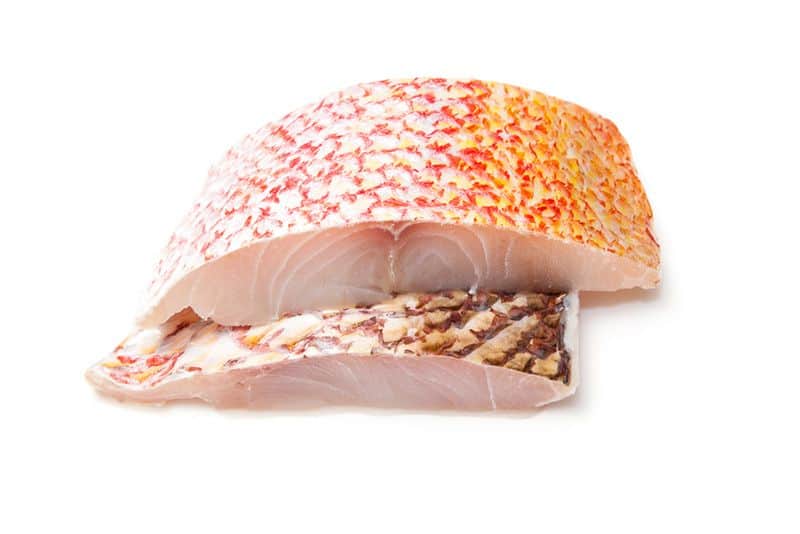
Step 1: Scaling
Scale the fish using a knife or a fish scaler. Scrape from the tail towards the head. Then rinse it under running water to remove all the leftovers.
Step 2: Gutting
Incise its belly from the anus to the jaw and pull out all the entrails. Wash the inside cavity thoroughly to get rid of the blood.
Step 3: Filleting
Rinse the fish again and pat dry it with tissues to remove all bacteria, slime, and dirt.
Incise the fish alongside the dorsal fins from its head to tail. Make a 90° cut at the head and stop when you feel the backbone.
Then, take out the fillet by cutting along its backbone, from the 90° cutline to the tail. Repeat with the other side.
Remove the belly flap, ribs, and pin bones with pliers. Finally, skin the meat with a boning knife. And your grilled fish fillet is on the way.
Conclusion
We pick Queen Snapper as the best Red Snapper substitute in terms of appearance and flavor. But it’s not that readily available to easily have some for your meal.
In this case, Grouper will come in handy. It brings you the taste closely akin to the original ingredient and is quite easy to find.
That said, the nature behind cooking is creativity. So just try anything that satisfies your palate most. If luck smiles on you, your new recipe is even wonderful enough to appear in a cooking book!
Related Posts:
- 8 Halibut Substitutes To Become Your New Favorite


